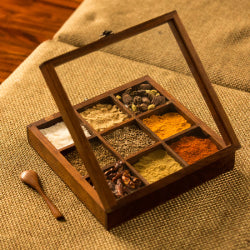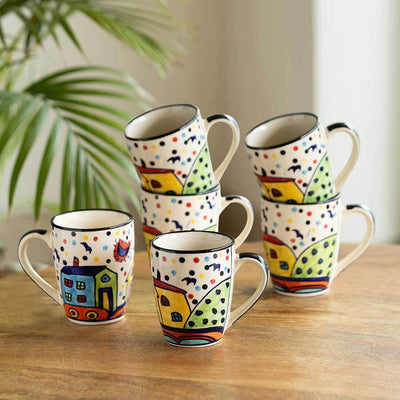All You Need To Know About Cardamom - Elaichi
Cardamom is a spice that is very commonly used in Indian dishes. Elaichi Chai is probably something we must have had at some point, be it in a meetup with friends or while exploring different teas for tea time. Cardamom originated from India and was used in the country predominantly but is now available worldwide. It is a versatile ingredient used in both sweet and savory dishes to create some very flavor-packed recipes. Called The Queen of Spices, cardamom is the third most expensive spice globally. It is a pod spice coming from the ginger family and can be used as a whole or by grinding the seeds.

There are two types of cardamom: green and black. Green cardamom is also called true cardamom and is most commonly found when you go to the store to buy this spice. A bleached version of the green cardamom can also be found, with less flavor than the former variety. Generally, green cardamom is used for sweet dishes, but it can also be used for savory dishes. On the other hand, Black cardamom is dark brown and has large pods, and is a significant element to put in delicious dishes. It has a smoky flavor, with the whole pod being used if asked explicitly in a recipe.
Cardamom Health Benefits And Disadvantages Of Overconsumption

This spice is not merely something that adds more flavor to your favorite dishes. Cardamom's benefits for our health are many. Cardamom is rich in antioxidants, which can help lower your blood pressure and keep blood sugar levels in check because of its manganese content. It also has phytochemicals that can help in fighting against cancer cells. In an Ayurvedic context, cardamom is said to help in balancing out the three doshas (namely Vatta, Pitta, and Kapha). Because it has metabolism-boosting properties, it can also aid in weight loss and keeps our heart’s health in check, especially the metabolic syndrome that leads to various heart-related issues. Cardamom with warm water at night every day can help retrieve these benefits. Cardamom benefits also include providing fresh breath, just like mint. This is because of the antibacterial properties found in this spice that also help fight a lot of infections. Cardamom benefits for skin can also be found because of these antibacterial properties, keeping our skin clear and blemish-free.
However, overconsumption of this spice can also lead to certain health issues. Skin allergies are one of the most common out of all of the cardamom side effects. Skin rashes are something people often experience because of overconsumption and if they are specifically allergic to this spice. There is also a risk of encountering respiratory allergies such as shortness of breath, chest pain, etc. Cardamom might also interfere with any drug use if you take any medication. Thus, it is advised to consider how much of this spice is being consumed. Cardamom can also cause issues in the stomach and digestive problems if overeaten. It can also cause the issue of gallstone if it is not digested correctly because the human digestive system has difficulty digesting this spice effectively. In this case, seeds might get collected that eventually form into stones (gallstones) which can be very painful to bear and cause bleeding. Therefore, even those who suffer from gallstones are advised not to consume this particular spice excessively, especially in its raw state. Thus, cardamom should be consumed wisely and in moderation.
Uses Of Cardamom – In Cooking And Otherwise

Cardamom has so many flavors to deliver that one might get confused about how one can incorporate this spice into a dish. Whether it’s a sweet or a savory one, you can pair this spice up as you please or as the recipe calls for. Cardamom is used in various Indian cuisines, right from curries to the very famous biryani. Firni and kheer also often have a slight hint of this spice, giving it a pleasant flavor. Moreover, many beverages also make use of this spice. So, one can verify the versatility of this lovely spice. It pairs well with meat and poultry and is very often used in making tea. Many baked foods like nankhatai also have this spice as both an ingredient and seasoning.

Apart from cooking, it also has various medicinal and other uses. For instance, it is used in several cosmetic items because of its fragrance. It is also used in skincare products because of its anti-inflammatory properties, which can help soothe and calm your skin. It is perfect if you have a cold or a sore throat and can help alleviate any sort of irritation. Because it also has muscle-relaxing properties, it can also help with recurring hiccups when consumed with warm water. It also helps with intestinal spasms, urinary problems, and irritable bowel syndrome (IBS) if consumed accordingly.

Cardamom, like other spices, has sorted its place in the heart of Indian cuisine. Mixed spices like the garam masala (of which this spice is a part) are used daily or on most occasions in every household. So we, at one point at least, have come across recipes that use this spice in some form.
The History of Indian spices is rich and diverse, just like the country. To give a few examples, every Indian dish uses an amalgamation of each spice, such as Bay leaf - tej patta, Black pepper - kali mirch, and Asafoetida - hing. Without these spices, dishes feel a little bland and incomplete. Like the everyday use of these spices, we have our wooden spice box to store these Indian spices that can be found in almost every Indian household. Get your masala box today from ExclusiveLane and have all of your spices just within reach in one place.






Leave a comment